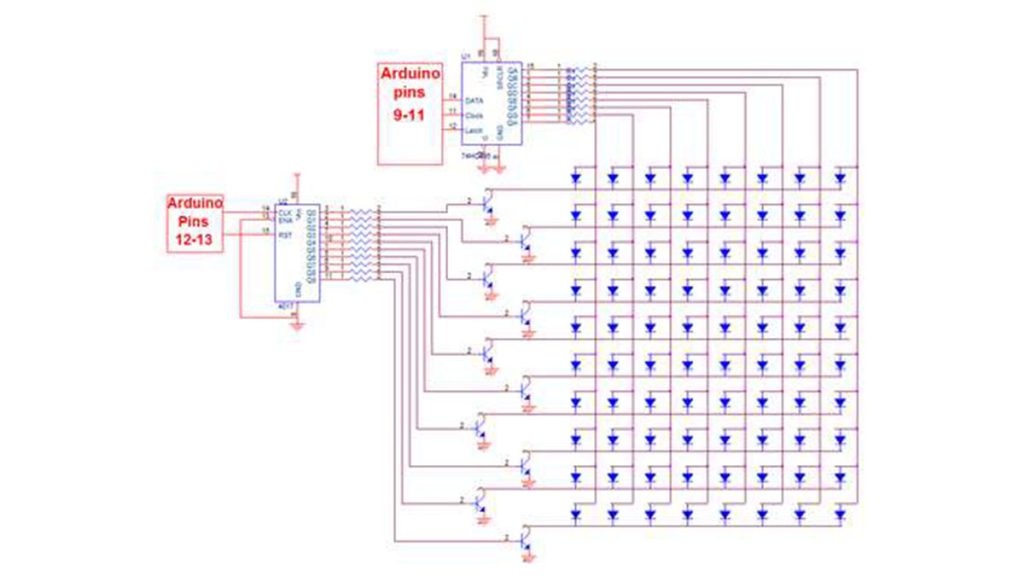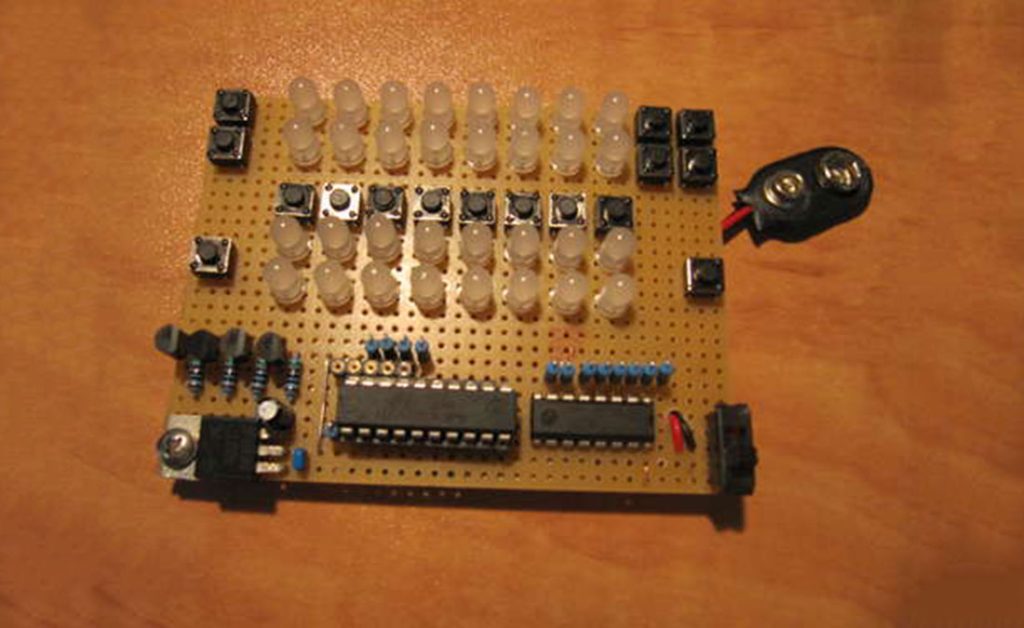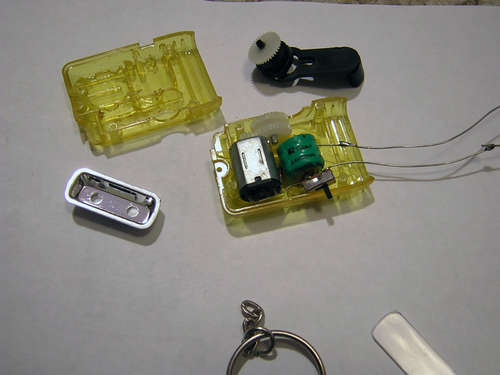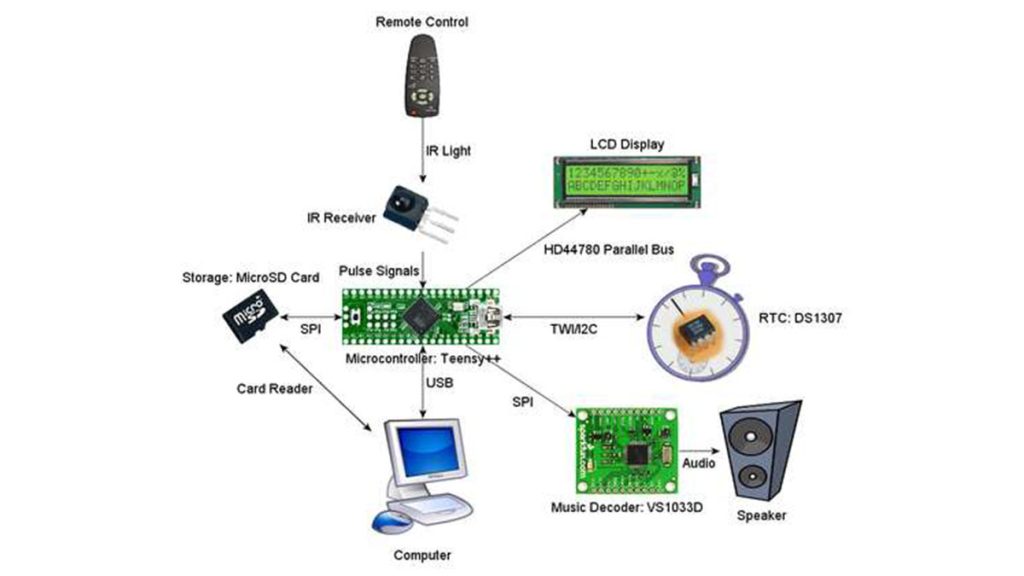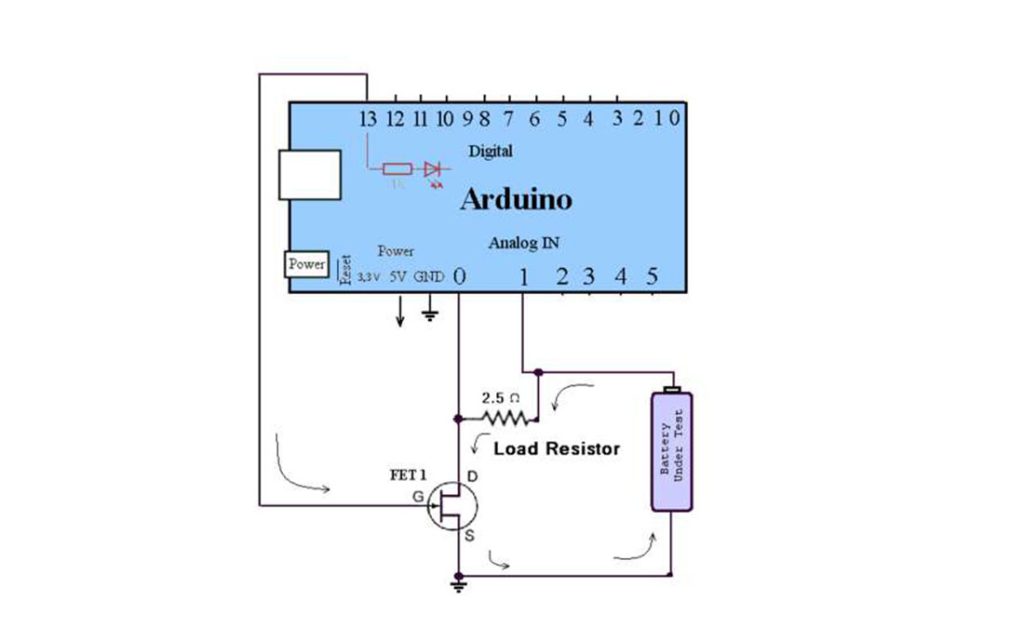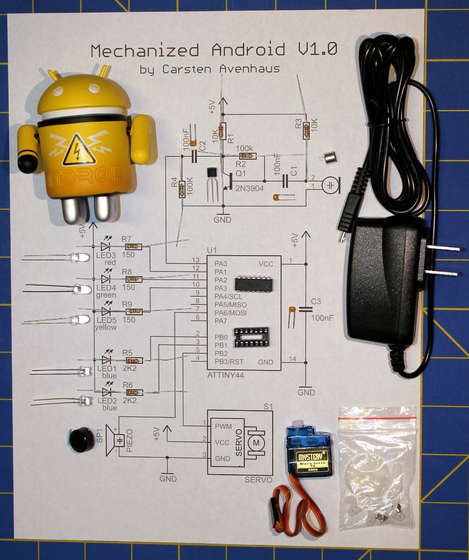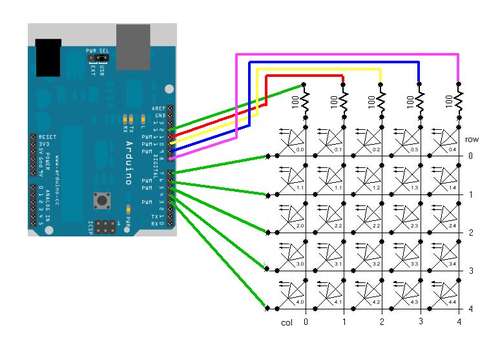Make a 8×10 L.E.D Matrix using the Arduino and 4017 decade counter
In this instructable I will show you how to build a quite fancy 8 by 10 L.E.D matrix(with scrolling text and animations) using the Arduino and 4017 decade counter. This type of matrix is easy to make and program and it is a good way learn how to multiplex. I have added another part to […]
Make a 8×10 L.E.D Matrix using the Arduino and 4017 decade counter Read More »

